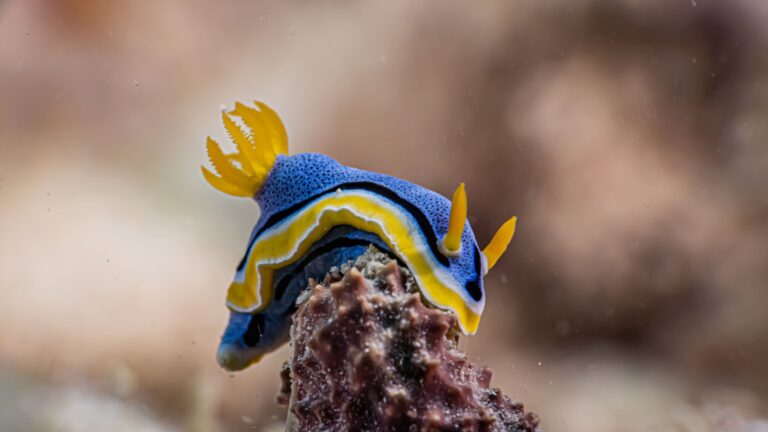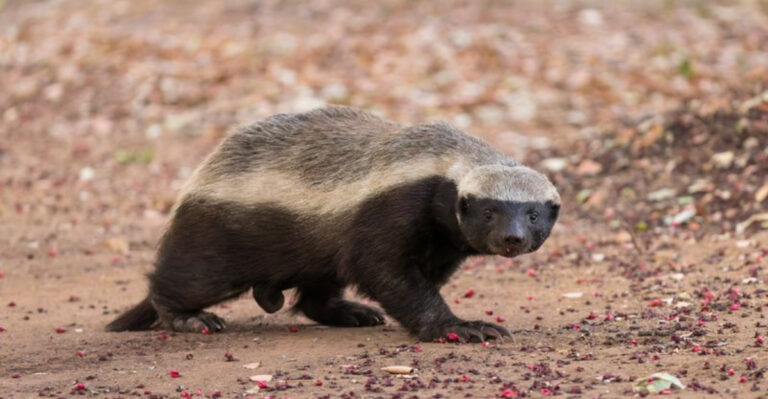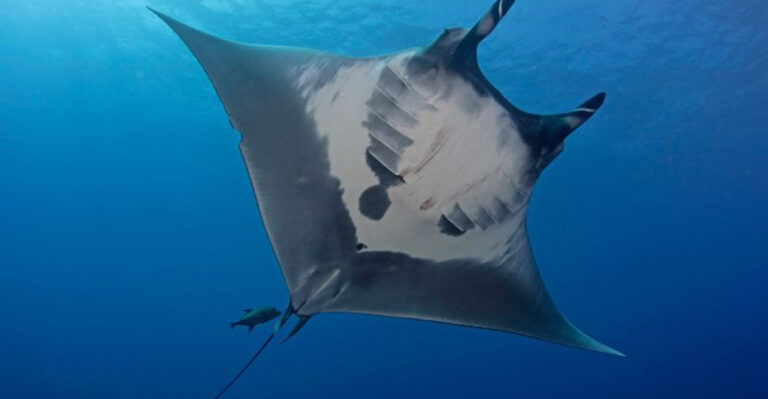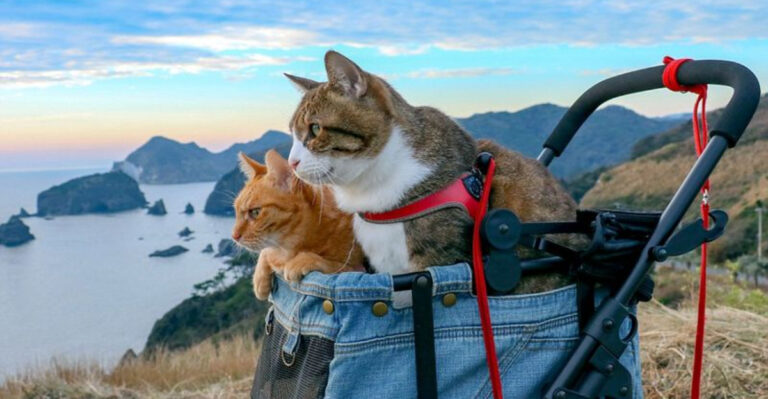17 Smart Tactics Outdoor Cats Use To Outsmart Predators
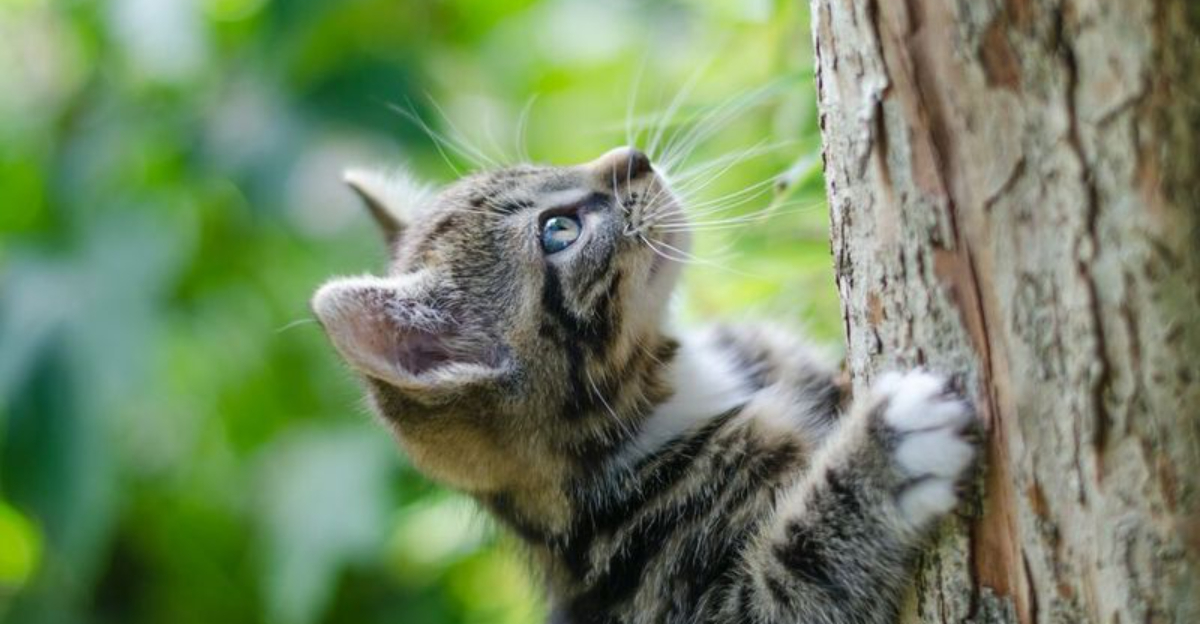
Ever wondered how your outdoor feline friend manages to survive in a world full of dangers? Wild and domestic outdoor cats face threats from coyotes, hawks, and other predators daily. Yet somehow, these clever creatures have developed remarkable survival skills through centuries of evolution.
These tactics aren’t just impressive – they’re life-saving masterpieces of natural intelligence.
1. Tree-Climbing Escape Artists
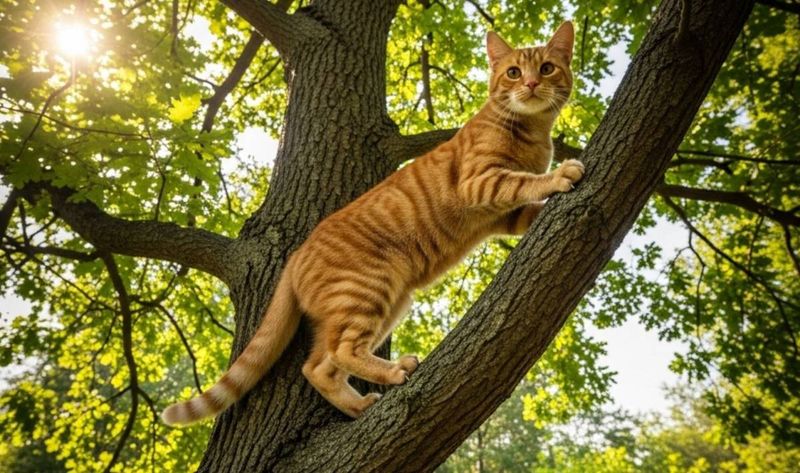
Lightning-fast scrambles up tree trunks leave ground predators frustrated below. Cats’ retractable claws act like built-in climbing spikes, gripping bark effortlessly.
Unlike dogs and many other predators, cats can rotate their ankles to climb down headfirst or backward, making trees perfect emergency shelters. This vertical advantage keeps them safely out of reach until danger passes.
2. Masters Of Freeze Mode
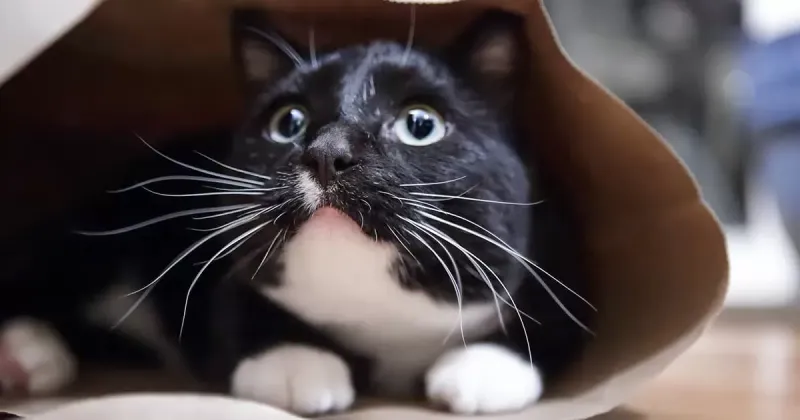
When spotted by a predator, cats often stop dead in their tracks. This isn’t panic – it’s strategy! Motion triggers predator chase instincts, while stillness makes cats harder to detect.
They’ll hold this statue-like pose until the threat passes or until they can safely retreat. Their patience in these moments is remarkable, sometimes remaining frozen for several minutes while barely blinking.
3. Nighttime Navigators
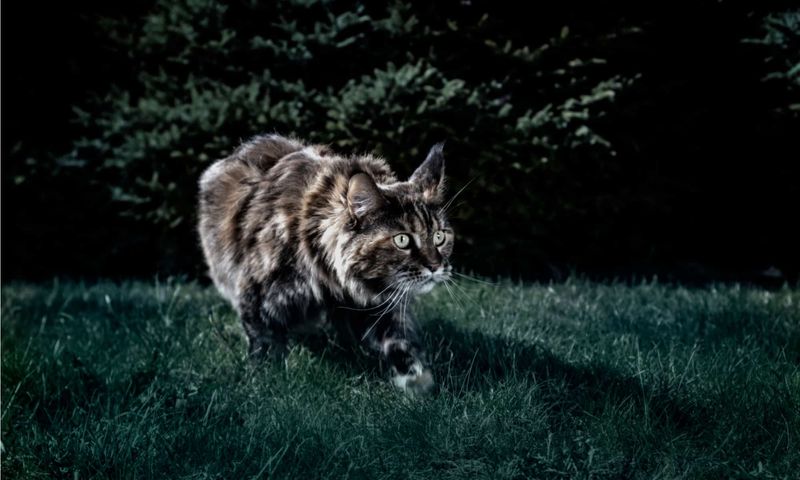
Darkness becomes a superpower for cats with their exceptional night vision. Their eyes reflect light thanks to a special layer called the tapetum lucidum, allowing them to see in light six times dimmer than humans need.
Many predators share this ability, but cats combine it with silent movement to become nearly invisible after sunset. This nocturnal advantage lets them hunt while avoiding becoming prey themselves.
4. Whisker Warning Systems
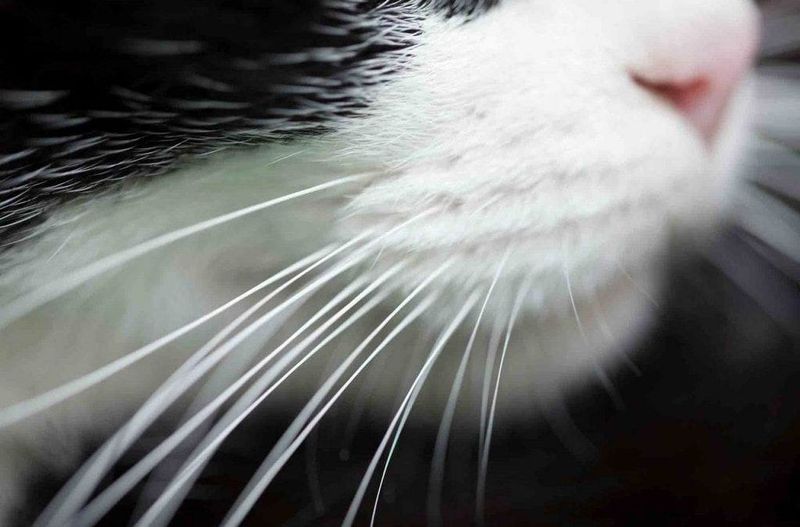
Those impressive whiskers aren’t just for show! Cats use these sensitive tactile hairs to detect air movement, helping them sense approaching dangers even from behind.
Each whisker connects to a nerve ending so sensitive it can feel air displaced by a predator’s movement. Think of them as nature’s motion detectors, giving cats precious extra seconds to react to threats they can’t yet see.
5. Puffed-Up Intimidation Displays
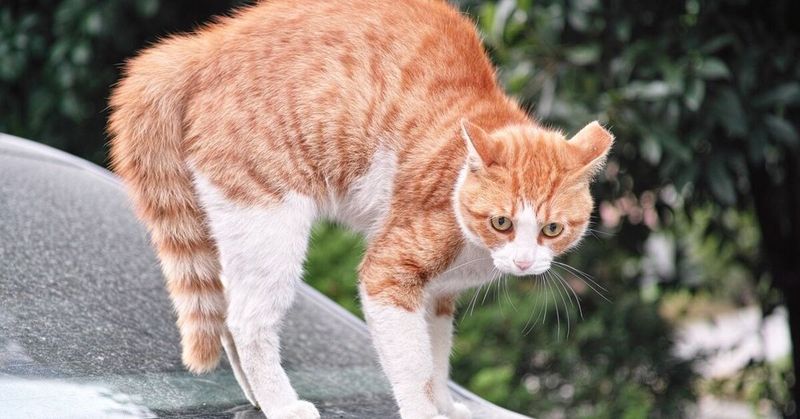
Ever seen a spooked cat with arched back and fluffed fur? This clever bluff makes them appear dramatically larger to potential threats.
By standing sideways and puffing up, a 10-pound cat can suddenly look twice its size. Combined with hissing and a raised tail, this display often convinces predators to seek easier targets. Pure psychological warfare in fur form!
6. Scent-Masking Experts
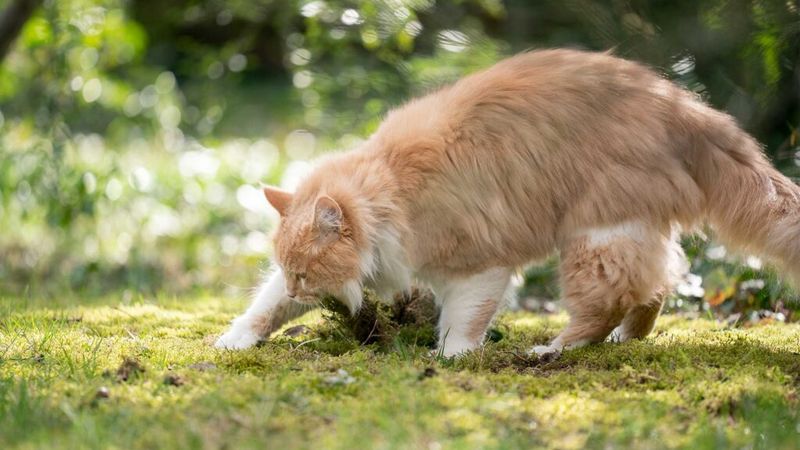
Survival requires staying off the menu – literally! Cats instinctively bury their waste to hide their scent from predators who might track them.
This isn’t just good manners; it’s life-saving stealth. They’ll also avoid areas marked by predators and occasionally roll in certain plants or dirt to mask their own smell. These scent-management tactics keep them from being detected by smell-oriented hunters.
7. Zigzag Escape Routes
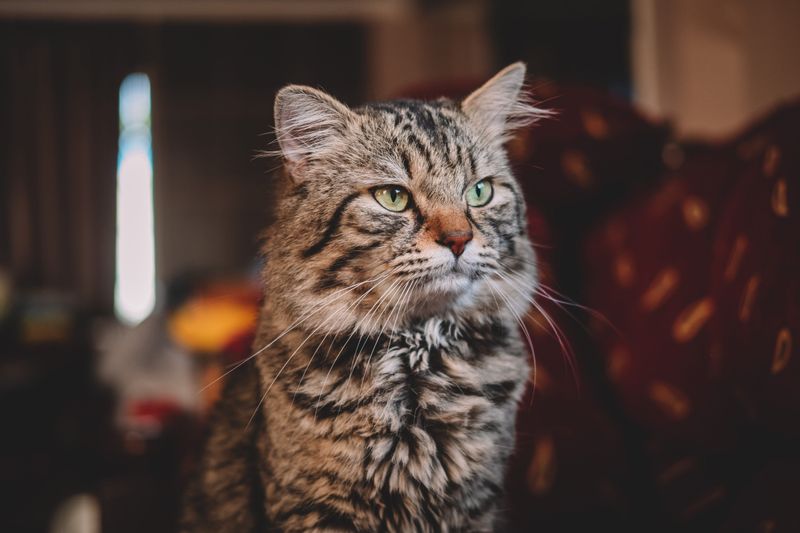
When pursued, cats don’t just run – they zigzag! This unpredictable pattern confuses predators who can’t anticipate their next move.
Most predators excel at straight-line chases but struggle with quick directional changes. Cats exploit this weakness with their incredible agility and flexible spine. Those sudden 90-degree turns mid-sprint might look random but they’re actually brilliant evasive maneuvers!
8. Strategic High Ground Positioning
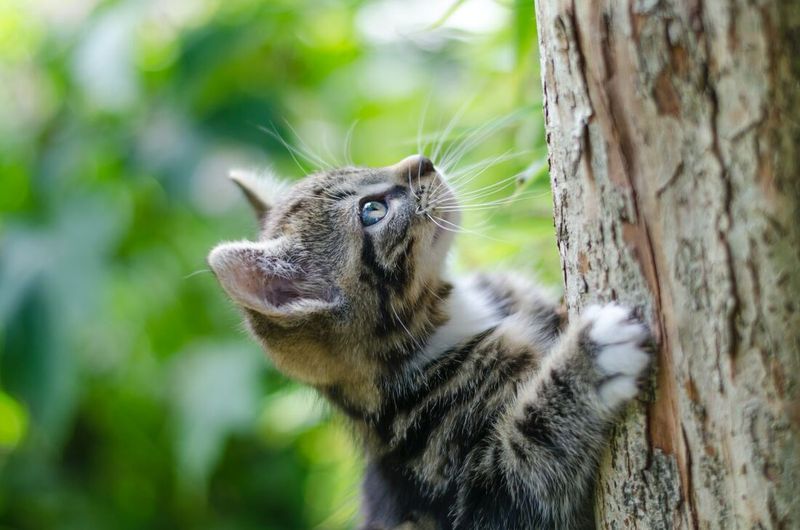
Rooftops, fences, and other elevated perches aren’t just comfy spots – they’re strategic observation posts. From these heights, cats scan for threats in all directions while remaining relatively safe.
This vantage point provides crucial early warning of approaching dangers. Many outdoor cats establish regular routes with multiple high points, creating a network of safe zones they can quickly access when needed.
9. Silent Movement Techniques
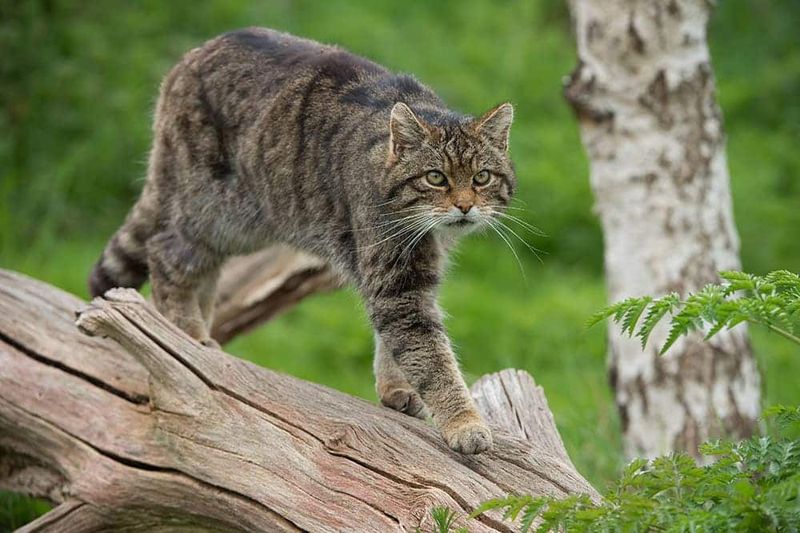
Stealth is second nature to cats, who place each paw with precision to minimize noise. Their padded feet naturally muffle sounds, making them nearly silent when stalking or fleeing.
This quiet movement serves two purposes: hunting success and predator avoidance. By controlling their weight distribution with each step, cats can cross noisy surfaces like dry leaves without making a sound, keeping their location secret from threats.
10. Group Defense Formations
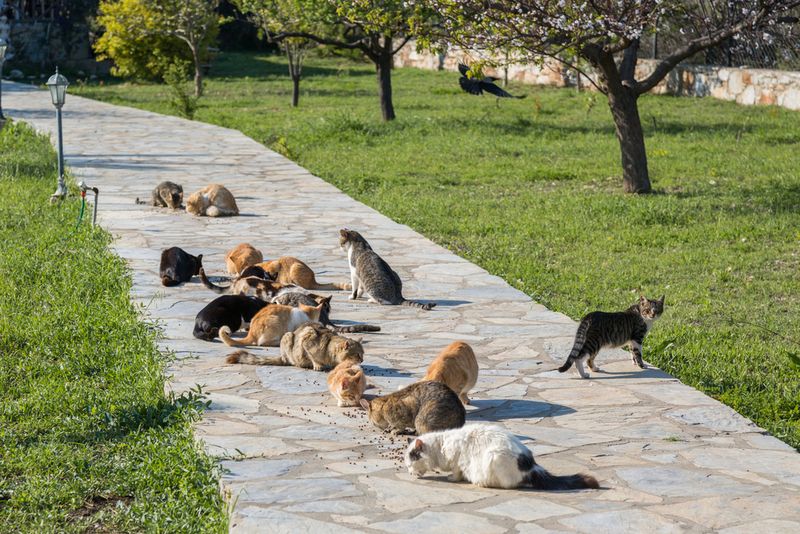
Feral cat colonies demonstrate remarkable teamwork when threatened. Adult cats form protective circles around kittens, with strongest members facing outward toward danger.
Multiple cats hissing and swatting together can deter predators seeking easy meals. Even domestic outdoor cats sometimes band together against common threats, temporarily setting aside territorial disputes. This united front significantly improves survival chances against larger predators.
11. Ultra-Sensitive Hearing Alerts
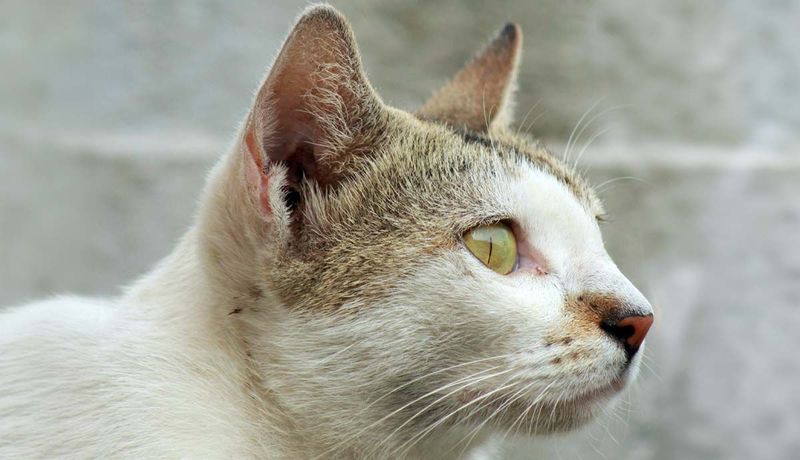
Those rotating satellite-dish ears aren’t just adorable – they’re sophisticated sound-locating tools. Cats can hear frequencies up to 64kHz (compared to humans’ 20kHz), detecting predators long before seeing them.
Each ear moves independently to pinpoint sound sources with remarkable accuracy. Watch a cat suddenly freeze with ears swiveling – they’re triangulating potential threats, calculating distance and direction from subtle sounds we can’t even perceive.
12. Calculated Risk Assessment
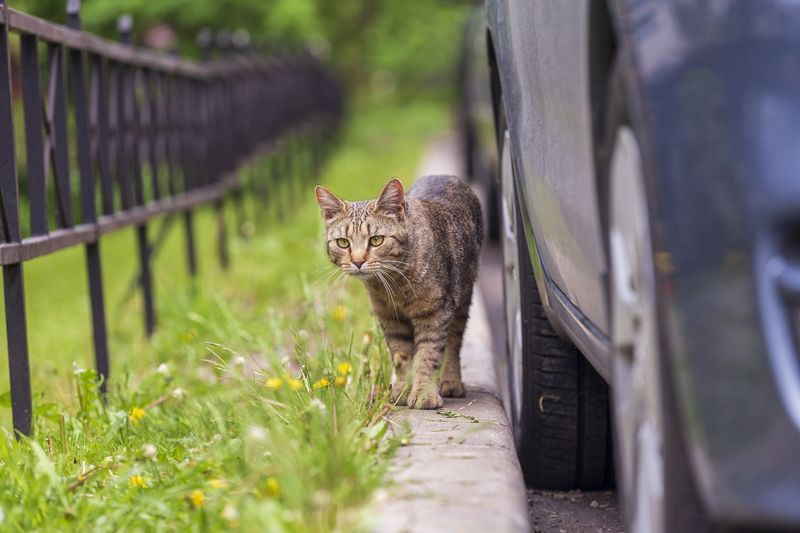
Before venturing into open spaces, cats perform remarkable risk calculations. They’ll pause at territory edges, using all senses to evaluate potential dangers before proceeding.
This isn’t hesitation – it’s sophisticated threat analysis. They consider recent scent markers, unusual sounds, and visual cues before choosing their path. This methodical approach prevents ambushes and keeps cats from wandering into high-risk areas.
13. Water-Crossing Strategies
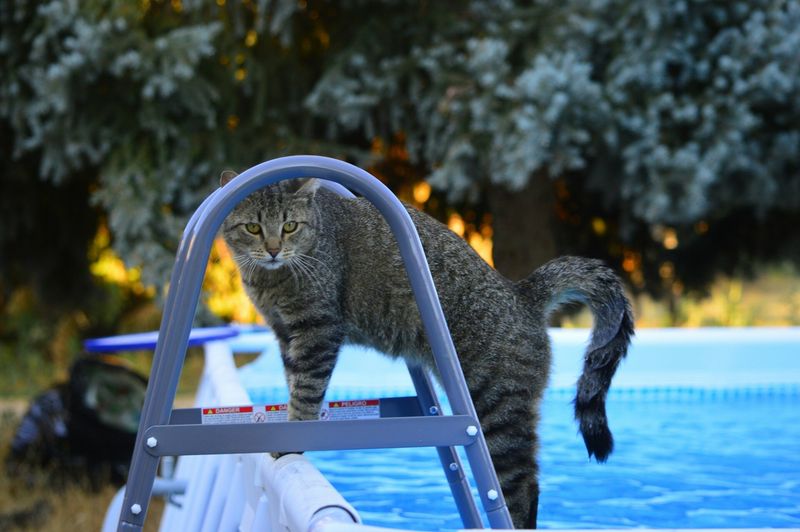
Despite their famous dislike of baths, cats will cross water when necessary to escape threats. They’ve been observed using stepping stones, fallen logs, or the narrowest points to minimize water contact.
Some cats even swim when absolutely necessary! This willingness to overcome their water aversion shows remarkable adaptive thinking. Predators expecting cats to avoid water completely might lose their trail at these unexpected crossing points.
14. Distraction Techniques
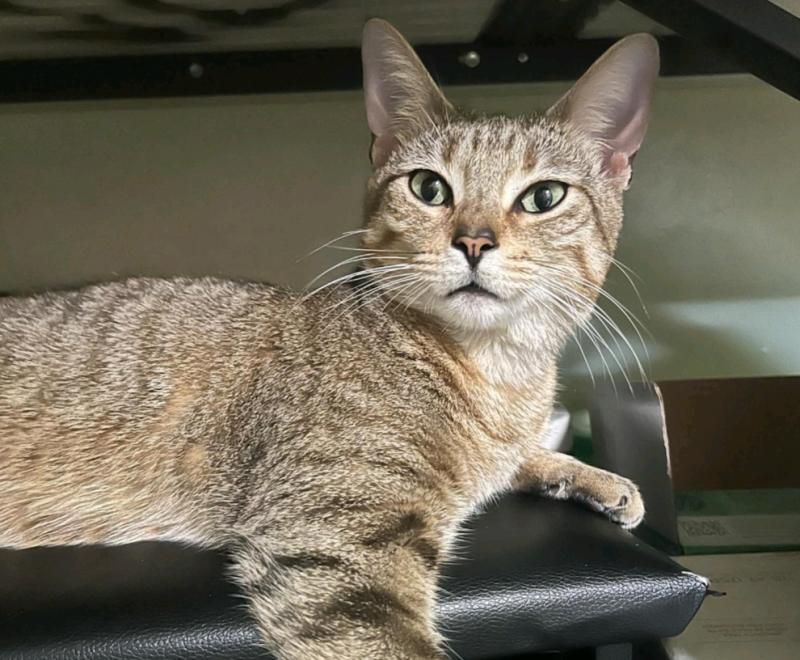
When cornered, cats sometimes create distractions to facilitate escape. Knocking over objects or suddenly darting in unexpected directions can momentarily confuse predators.
This split-second confusion provides the opening needed to reach safety. Some cats even use vocal distraction, making loud noises in one direction before fleeing in another – a sophisticated misdirection tactic requiring impressive situational awareness.
15. Weather-Based Activity Adjustments
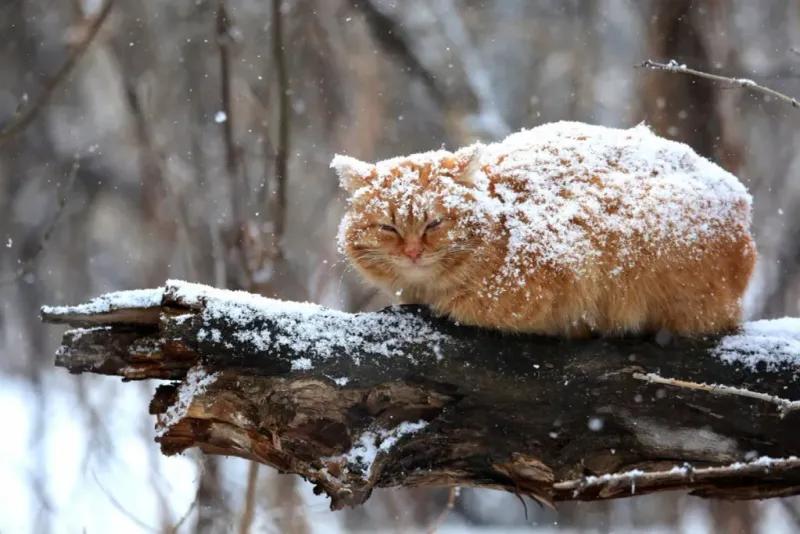
Rain, snow, and wind patterns influence when cats venture out. Heavy precipitation masks scents and sounds, making predator detection harder, so cats often shelter during these times.
Conversely, they might use windy conditions strategically since blowing air carries their scent away from downwind predators. This weather-conscious behavior demonstrates sophisticated risk management, adjusting activity patterns to environmental conditions for maximum safety.
16. Fake Retreat Maneuvers
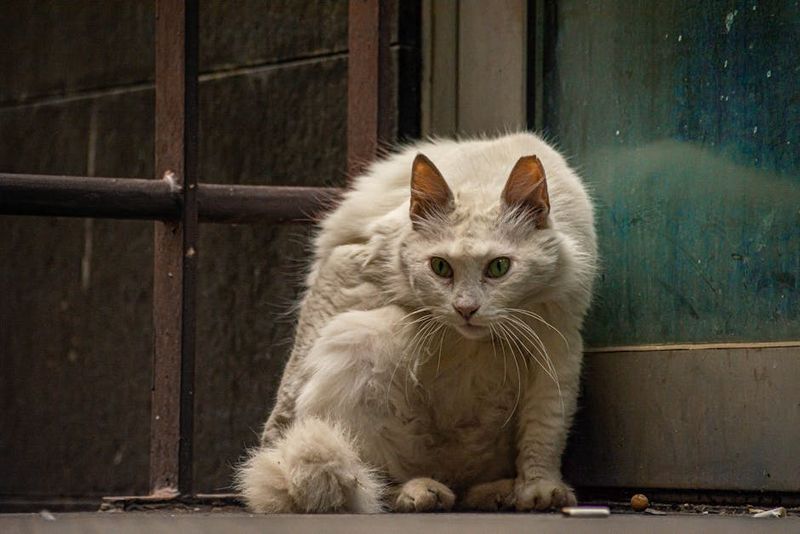
When directly confronted, some cats perform a tactical fake-out – appearing to retreat before suddenly turning to face the threat. This unexpected reversal often startles predators who expected continued flight.
During this maneuver, the cat typically presents its most intimidating posture. The element of surprise in this counter-attack can be enough to make predators reconsider their pursuit, especially if they were expecting an easy chase.
17. Territory Memory Mapping
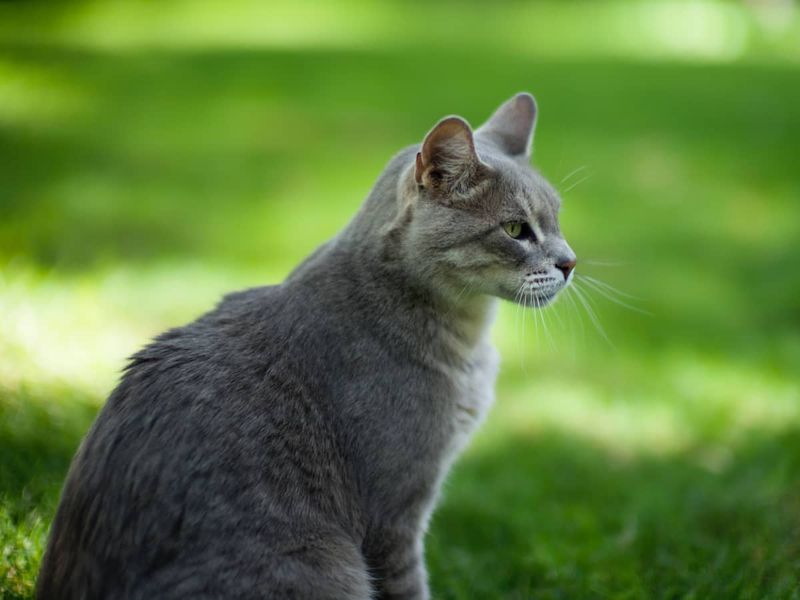
Cats create detailed mental maps of their territories, memorizing every potential escape route and hiding spot. This spatial awareness becomes critical during chases when split-second decisions matter.
They remember which fences have holes, which garages stay open, and where dense bushes offer protection. This encyclopedic knowledge of their environment gives cats a home-field advantage against predators unfamiliar with the territory’s hidden features.

